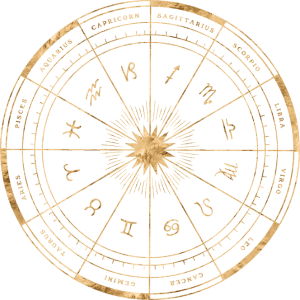- FAMILY MEMBERS (04) CONSULTATION
- Black Magic Removal & Tantric Consultation
- VASTU IN HOME & OFFICE CONSULTATION
- Complete Life Consultation
- Emergency Consultation
- Childbirth & Future Consultation
- MARRIAGE MATCH MAKING CONSULTATION
- MARRIAGE & RELATIONSHIP CONSULTATION
- HEALTH & MEDICAL CONSULTATION
- Online Video Consultation
- Business & Career CONSULTATION
- Follow-up Session

Palmistry: The Ancient Art of Hand Reading
Palmistry, also known as Chiromancy, is the ancient practice of interpreting the lines, shapes, and mounts of a person's hands to reveal aspects of their personality, destiny, and future. Practiced for thousands of years in India, China, Egypt, and Greece, palmistry has fascinated people with its mysterious insights and spiritual symbolism.
While some regard it as a pseudoscience, many believe palmistry to be a powerful tool for self-understanding and intuitive guidance. Whether you view it as science, art, or spiritual tradition, palmistry offers a compelling lens into the human condition.
The Origins of Palmistry
The roots of palmistry trace back to ancient India, where it was deeply embedded in Vedic astrology and referred to as Hasta Samudrika Shastra—the science of hand signs. From India, it spread to China, Persia, Tibet, Egypt, and then to Greece.
The Greek philosopher Aristotle studied palmistry and introduced it to the West. Even Alexander the Great reportedly used palmistry to evaluate the character of his officers. Over time, palmistry evolved and blended with astrology, numerology, and mysticism, becoming popular in the West during the Renaissance and Victorian eras.
The Basic Structure of Palmistry
Palmistry involves the analysis of two main features of the hand:
1. Lines
The most recognized aspect of palmistry, the lines on the palm reveal emotional tendencies, thought patterns, and life experiences.
2. Mounts
These are the padded areas under the fingers and on the palm, each associated with a particular planet, indicating specific qualities like ambition, love, or creativity.
Right Hand vs. Left Hand
In palmistry, both hands are analyzed:
Right-handed person: The left hand shows potential or inherited traits (what you're born with), while the right hand shows the actual life path (what you've done with it).
Left-handed person: The reverse applies.
Some palmists read both hands together to form a more complete picture.
The Major Lines in Palmistry
1. Heart Line
Location: Uppermost horizontal line, below the fingers.
Meaning: Emotions, love life, and relationships.
Long and deep: Passionate and open-hearted.
Short: Reserved in love.
Curved upward: Emotionally expressive.
Straight: Logical and cautious in matters of love.
2. Head Line
Location: Middle line running horizontally across the palm.
Meaning: Intellect, thinking style, decision-making.
Long: Thoughtful and analytical.
Short: Direct and action-oriented.
Straight: Practical and realistic.
Curved: Creative and intuitive.
3. Life Line
Location: Arcs around the base of the thumb.
Meaning: Vitality, life energy, and major life changes—not how long you’ll live.
Long and deep: Strong vitality.
Faint: Low energy or cautious nature.
Breaks: Significant life changes or challenges.
Double lines: Extra strength or protection.
4. Fate Line (Destiny Line)
Location: Runs vertically from the wrist toward the middle finger.
Meaning: Career, life path, and external influences.
Deep and straight: Clear career path.
Broken: Life changes or changes in direction.
Absent: Life guided more by free will than fate.
Minor Lines in Palmistry
1. Sun Line (Apollo Line)
Associated with fame, success, and creativity.
Located near the ring finger.
2. Mercury Line (Health Line)
Runs from the base of the palm toward the little finger.
Indicates health and communication skills.
3. Marriage Lines
Found on the side of the palm below the little finger.
Indicate romantic relationships or emotional bonds.
4. Children Lines
Thin vertical lines near the marriage lines.
Believed to indicate number and gender of children (controversial and symbolic rather than literal).
Mounts of the Palm
Each mount is associated with a planet and is analyzed for its size and prominence.
1. Mount of Jupiter (Below index finger)
Confidence, leadership, ambition.
Well-developed: Strong leadership qualities.
Flat: Lack of ambition.
2. Mount of Saturn (Below middle finger)
Wisdom, responsibility, seriousness.
Prominent: Deep thinker, disciplined.
Low: Carefree or unreliable.
3. Mount of Apollo (Below ring finger)
Creativity, fame, beauty.
High: Artistic and expressive.
Low: Disinterest in fame or art.
4. Mount of Mercury (Below little finger)
Communication, wit, business sense.
Well-formed: Skilled communicator or businessperson.
5. Mount of Venus (Base of thumb)
Love, sensuality, vitality.
Prominent: Passionate and affectionate.
Low: Emotionally distant or reserved.
6. Mount of Moon (Luna) (Opposite Venus mount)
Imagination, intuition, psychic abilities.
Raised: Dreamer, emotional, spiritual.
Palm Shapes and Their Meanings
Hand shapes are categorized based on the four elements:
1. Earth Hands
Square palm, short fingers.
Practical, grounded, hardworking.
2. Air Hands
Square palm, long fingers.
Intellectual, analytical, communicative.
3. Water Hands
Long palm, long fingers.
Intuitive, emotional, sensitive.
4. Fire Hands
Long palm, short fingers.
Passionate, confident, energetic.
These shapes offer insight into a person's temperament and behavior.
Palmistry in the Modern World
While modern science doesn’t officially recognize palmistry, many people around the world still consult palmists for guidance in areas such as:
Career and success
Relationship compatibility
Health warnings
Personality analysis
Spiritual insight
Some practitioners blend palmistry with psychology, intuition, or energy reading, using the palm as a symbolic map rather than a strict predictor.
Myths and Misconceptions
1. Palmistry predicts death: False. Palmistry cannot predict the exact time of death. It focuses more on trends and patterns.
2. Lines don’t change: Not true. Palm lines can change with age, experiences, or even significant life events.
3. All palmists are psychics: While some are, many use palmistry as a symbolic tool rather than supernatural prediction.
How to Start Learning Palmistry
If you're interested in learning palmistry, here are some steps:
Study basic hand anatomy and major lines.
Practice reading your own hand and those of friends.
Use palmistry books or apps to deepen your knowledge.
Observe patterns and refine your intuition over time.
Remember: palmistry is interpretive—not absolute truth.
Final Thoughts
Palmistry is a captivating practice that opens a window into human nature, character, and potential. Whether used for fun, self-reflection, or spiritual exploration, palm reading offers a unique blend of symbolism, psychology, and intuition.
In a world driven by technology, this ancient art reminds us that wisdom can still be found in the lines etched on our very hands—telling stories not just of fate, but of strength, transformation, and inner truth.

